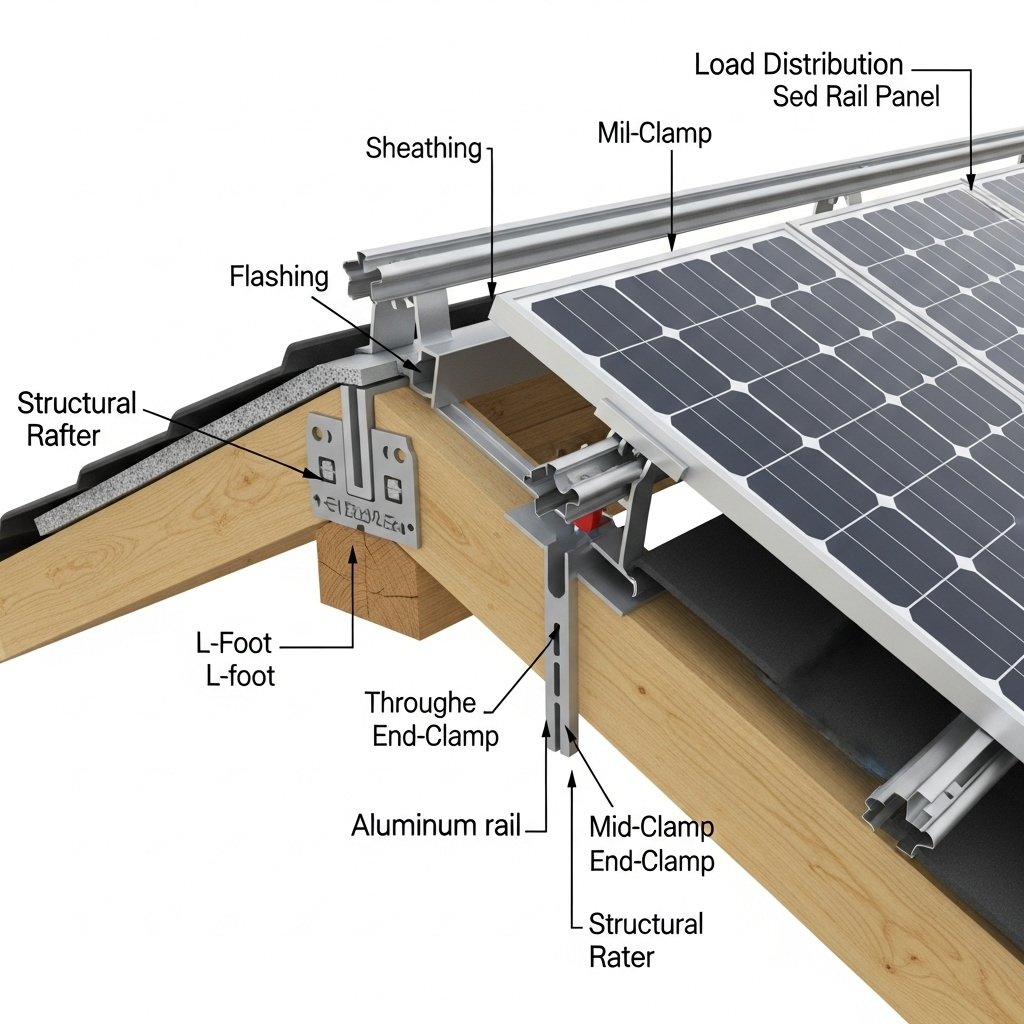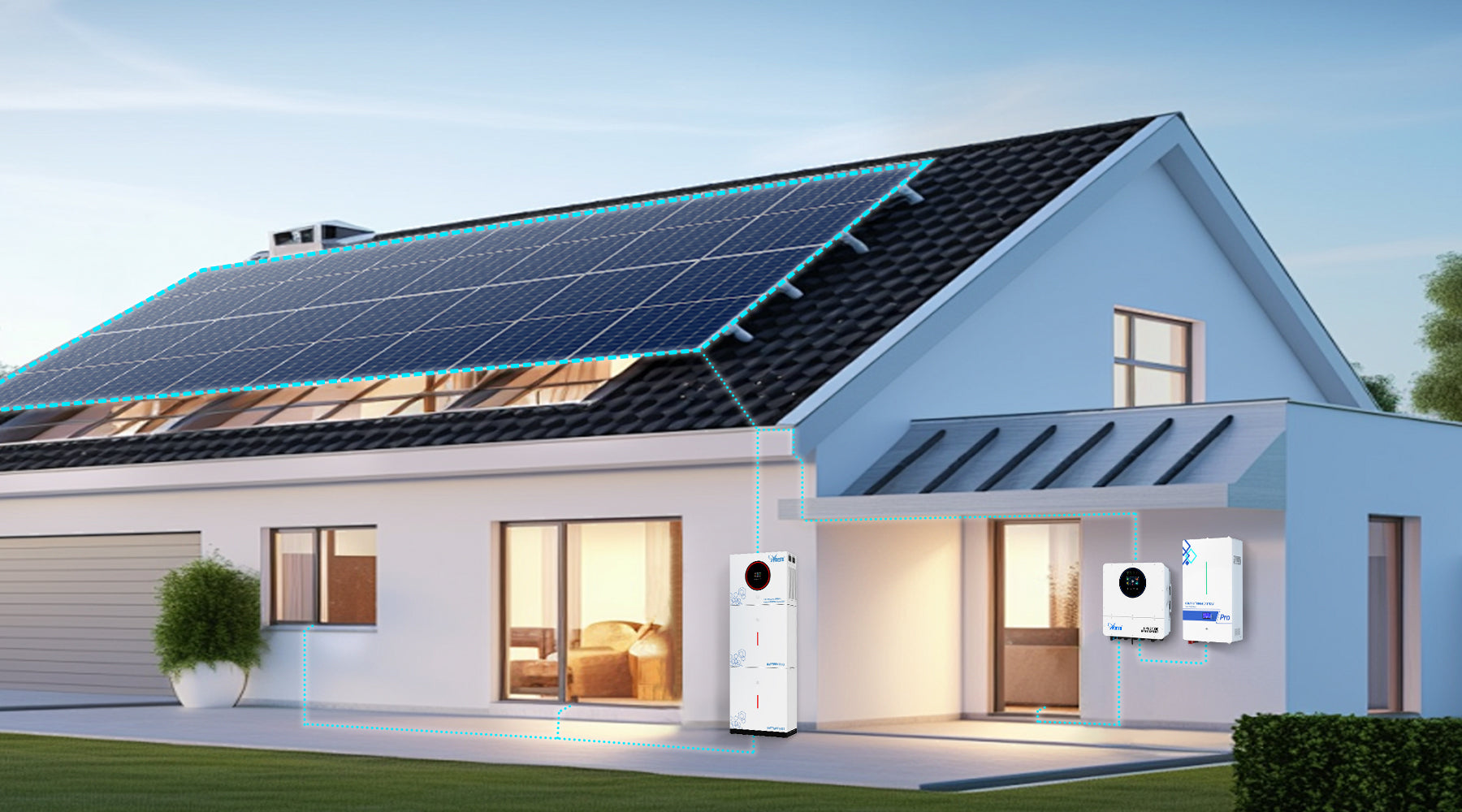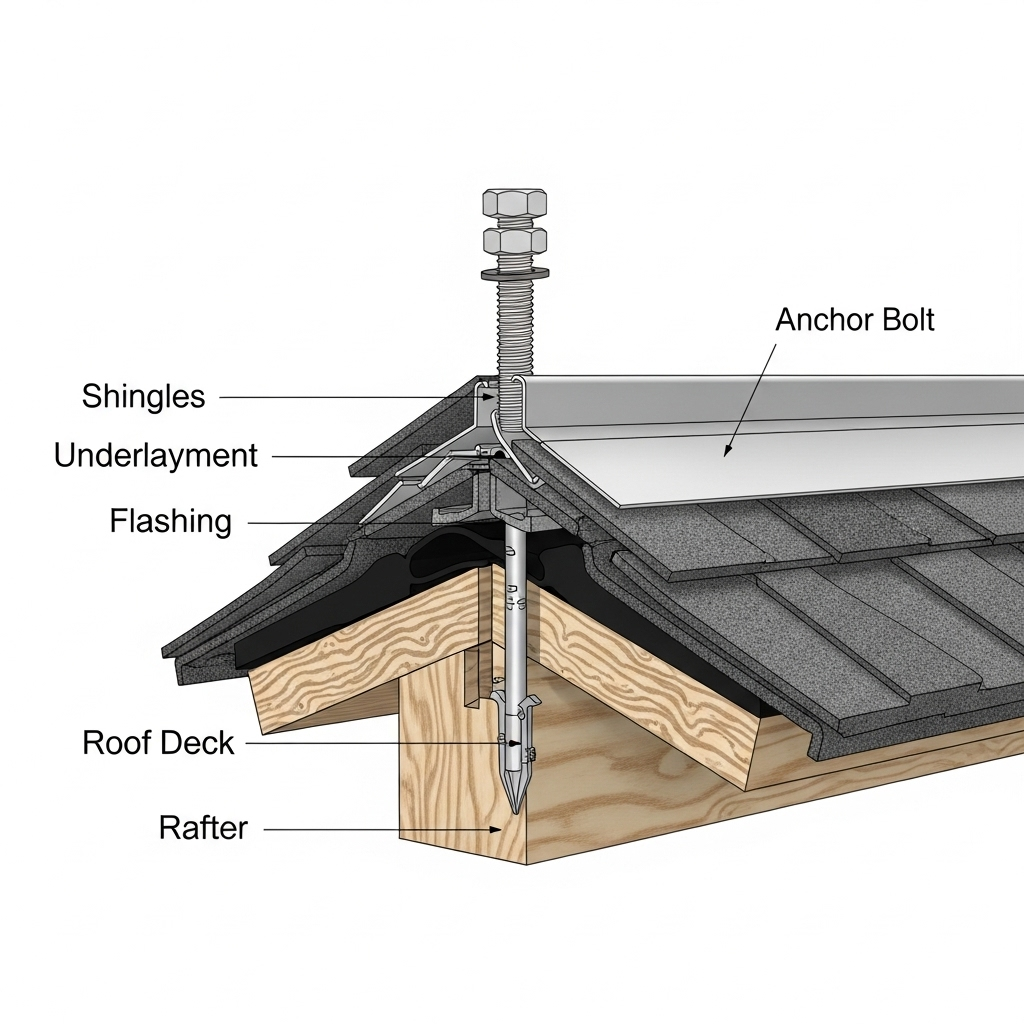In my decade of installing rooftop solar, the first question homeowners always ask is, "Can my roof actually handle the weight?" It's a valid concern, but it's fueled by a myth that solar panels are a risky, heavy burden. From my experience on hundreds of job sites, I can tell you the reality is much safer. A professionally installed, rail-based mounting system isn't a risk; it's an engineered solution designed to protect your roof for decades.
Why I Trust Rail-Based Mounts as an Industry Standard
A mounting system does more than just pin panels to your roof; it creates an integrated structure. Rail-based systems are the backbone of the industry for a reason: they are incredibly effective at managing loads and protecting the home underneath.
The concept is simple: we attach strong aluminum rails to your roof's rafters—the core structural beams. The solar panels are then clamped securely onto this rail framework. This elevates the panels off the roof surface, which is great for airflow, but its main job is structural integrity. The magic is in how this framework distributes the load. Instead of the panels' weight pushing down on a few spots, the rails spread that force across many attachment points. I often explain it to homeowners like this: it’s like wearing snowshoes. Your weight is the same, but because it's spread out, you don’t sink. This system ensures no single rafter is over-stressed.

Let's Talk Numbers: What I See on the Job
The perception of "heavy" solar panels is where the myth really falls apart. A typical panel is about 40-50 pounds. The racking itself adds very little. When installed, the total weight comes out to just **2 to 4 pounds per square foot (psf)**. To put that in perspective, a second layer of common asphalt shingles—something roofers add all the time—can weigh 5-7 psf. Most modern roofs are built to handle a minimum of 20 psf to account for things like heavy snow. The load from a solar array is a fraction of what your roof is already designed to withstand.
The Issues I Actually Worry About (and How Rails Solve Them)
After thousands of hours on roofs, I can tell you that static weight is almost never the real risk. The true challenges are invisible forces and water, both of which are expertly managed by a good rail system.
The Real Threat: Wind Uplift
Wind flowing over a roof creates a powerful lifting force, like an airplane wing. This uplift can try to pull the panels right off. This is where rails are critical. Because they are anchored directly into multiple rafters with heavy-duty hardware, they provide immense resistance to this force. The interconnected frame ensures the entire array acts as one solid, rigid unit that stays put, even in severe weather.
Keeping Your Home Dry: The Art of Flashing
Drilling holes in a roof is something we take very seriously. Every attachment point is a potential leak if not handled correctly. That’s why we use flashing—a purpose-built metal plate that slides under the shingles. The mount comes up through the flashing, and the whole assembly is sealed with industrial-grade sealant that lasts for decades. When done right, a flashed attachment is just as watertight as the rest of your roof. Before I sign off on any job, I personally inspect these seals.
The Bottom Line: It's About Engineering, Not Weight
The conversation around solar safety shouldn't be about perceived weight. It should be about the quality of the engineering. A rail-based system's value is in its proven ability to distribute a minimal load safely while fiercely resisting dynamic wind forces. As the U.S. continues its shift to clean energy, as detailed in the Department of Energy's Solar Futures Study, trusting these proven, reliable technologies is key. From my professional perspective, a well-installed rail-based system doesn't add risk—it adds a secure, powerful, and lasting asset to your home.





Leave a comment
All comments are moderated before being published.
This site is protected by hCaptcha and the hCaptcha Privacy Policy and Terms of Service apply.